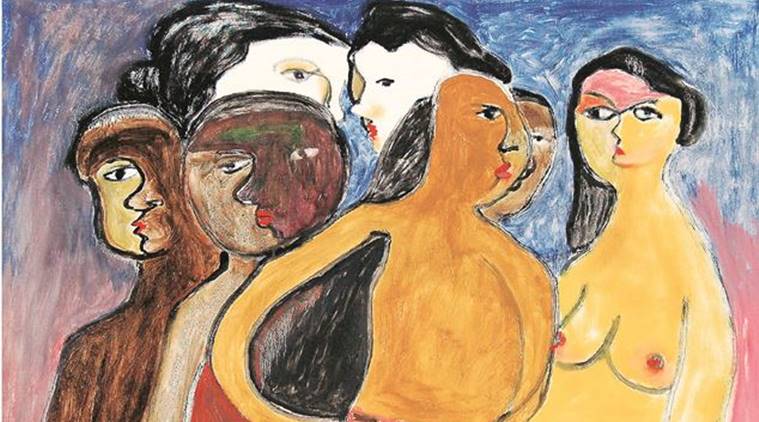Portrait of A Surreal Artist
Kartick Chandra Pyne, who brought surrealism to Indian art, battled poverty and ill health to keep painting.
 Pyne’s work titled “Uproar” (Source: Aakriti Art Gallery)
Pyne’s work titled “Uproar” (Source: Aakriti Art Gallery)
When his contemporaries were experimenting with genres ranging from Cubism to Impressionism in the ’60s, Kartick Chandra Pyne was depicting a world beyond. Through his surreal brushstrokes, he reconstructed reality, bringing together indigenous Indian folk and modernity, painting what some critics have defined as “free form images” where the artist was not constrained with the limitations of actuality.
On September 17, Pyne breathed his last at his Kolkata home. Aged 86, he is survived by his wife, two daughters and a son. “He had been unwell for some time and stopped painting about a year ago. Till his health permitted, he used to push himself to work. Art gave him purpose. When he could not make large canvases he turned to smaller works,” says his son Apan Pyne.
Considered one of the pioneers of surrealism in Indian art, a stroke in 1994 had left Pyne paralysed on the left side but did not deter his zeal to paint. In fact, in the late ’90s he painted his acclaimed nude series. “The attack had impacted him physically but he was alert and carefully observed those around him. He was very forward looking in his art and I have noticed that most of his works appeal to the younger generation,” says Richa Agarwal, CEO of Emami Chisel Art, who has more than 100 works of Pyne in her collection.
 Kartick Chandra Pyne: 1931-2017
Kartick Chandra Pyne: 1931-2017
Born in 1931 into an aristocratic gold merchant family in Kolkata, Pyne was the elder cousin of the well-known artist Ganesh Pyne who gained commercial success early. Winner of four Academy of Fine Arts Awards (1966, 69, 73 and 76), Kartick was one of the artists who represented India in the exhibition “100 Years of Modern Indian Art” held in the Fukuoka Museum, Japan, in 1979, but he struggled through the ’80s and ’90s.
It was in September 2005 when his painting Bird in a Cage sold at a Sotheby’s auction in New York for $10,200 (approx Rs 4.7 lakh then), that attention turned to him, once again, in the domestic circuit as well. In 2006, Kolkata-based Aakriti Art Gallery organised a retrospective, comprising works from the 1950s to 2005 . “He is one of most underrated masters and had so many stories to share about each of his work,” says Vikram Bachhawat, director of Aakriti Art Gallery.
He recalls how the artist had fallen on hard times and moved to the suburbs of Kolkata before Bachhawat traced him in 2003-04. “He was very humble and did not know anything about the market. When I first met him, he actually said most people did not even pay him for his work. He did not know the worth of his art that sold for lakhs,” adds Bachhawat.
 (Source: Aakriti Art Gallery)
(Source: Aakriti Art Gallery)
Graduate in art from Government College of Art & Craft, Kolkata, Pyne was initially attracted to landscapes but turned to surrealism in the ’60s. Inspired by the likes of Fernand Leger, Marcel Duchamp and Joan Miro, he often painted a world of fantasy where he merged the traditional and the modern in mediums ranging from large oils to watercolours on rice paper, among others. “I am a big admirer of his work. There was a simplicity in his paintings and he managed to convey so much. He was awarded two state awards by the West Bengal state government in 2013,” says artist and Rajya Sabha member Jogen Chowdhury.
Lamenting that not many are aware of the veteran artist, Chowdhury hopes that a film, Line, Story, Design, made by the Charukala Parishad, will fulfill the purpose. “It is a film on his life and work and I hope it will help people realise his contribution to Indian art,” adds Chowdhury.


- 01
- 02
- 03
- 04
- 05

























